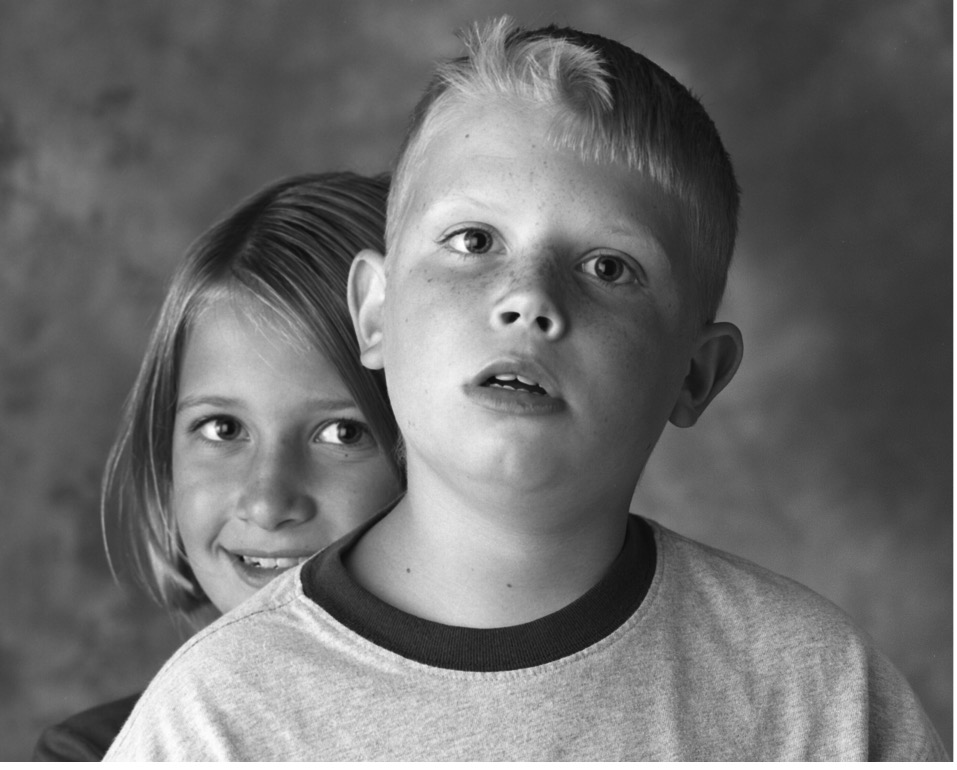
Why will some children not provide eye-contact in a photo session? A form of Autism (Autism Spectrum Disorder) may be the reason. Let’s first look into what might be happening in this scenario.
In this image by Thomas Balsamo, professional photographer and author of “Souls: Beneath and Beyond Autism,” The boy has a very different look in his eyes than those of his sister. It is as though his focus seems to be nowhere at all, just a stare into space. This “far off gaze” is typical with children who have a sensory spectrum disorder, commonly referred to as autism.
Other children with this disorder may see you or your camera and quickly look away or turn their head almost a full 90 degrees over their shoulder. This can certainly present a bewildering dilemma for a photographer who yearns to capture a loving image of siblings together or of a family group that shows all members infectiously engaged with the camera.
One of the main reasons explained by persons with autism is that to look into someone’s eyes can be painful. In therapy, they are sometimes taught to look at a person’s forehead or top of the head. One teen explained the uncomfortable feeling as when you exit the dark movie theater into the bright light of day. This is not a pleasant sensation. Can you blame someone for wanting to look away?

Another photo by Thomas Balsamo shows what we call the “tight embrace” to help a person with autism to relax. The pressure from both front and back can help a child or other person with autism be less tense.
This “pressure” concept can be applied in different ways. Karen Dorame arranged to meet these two brothers at a community playground, specifically chosen because it had water tumbling over rocks, which mom said was a relaxing stimulation for these two boys who have autism.

There were three keys to the success of this capture. After a bit of solo rambling, the boys were 1) seated back to back by their dad, 2) a “camera baffle” (available on www.heartsandlens.org) was used to hide the photographer and camera and 3) a 70-200 lens was used to provide distance. Prior to this photo session, the mother had never had a photo of her boys.
Photo suggestions regarding eye-contact:
- Be prepared to create a portrait without eye-contact if it doesn’t happen
- Find out if “counting or lining up small objects” will relax the child (this often does)
- Will therapeutic “brushing” relax the subject? (mom usually knows about this)
- Use a camera baffle around your camera lens
- Ask parent about what environment will help the child relax (i.e., sound of water or ?)
- If feasible, use a toy, pet or other object as prop in the photo
- Employ parent or sibling member to provide “pressure” to help child relax
There’s a lot more to understand about Autism. We know that persons with this condition can be very intelligent and interesting. Enjoy working with them. If you have some of your own insights you would like to share with us, please do! heartsandlens@gmail.com.



















